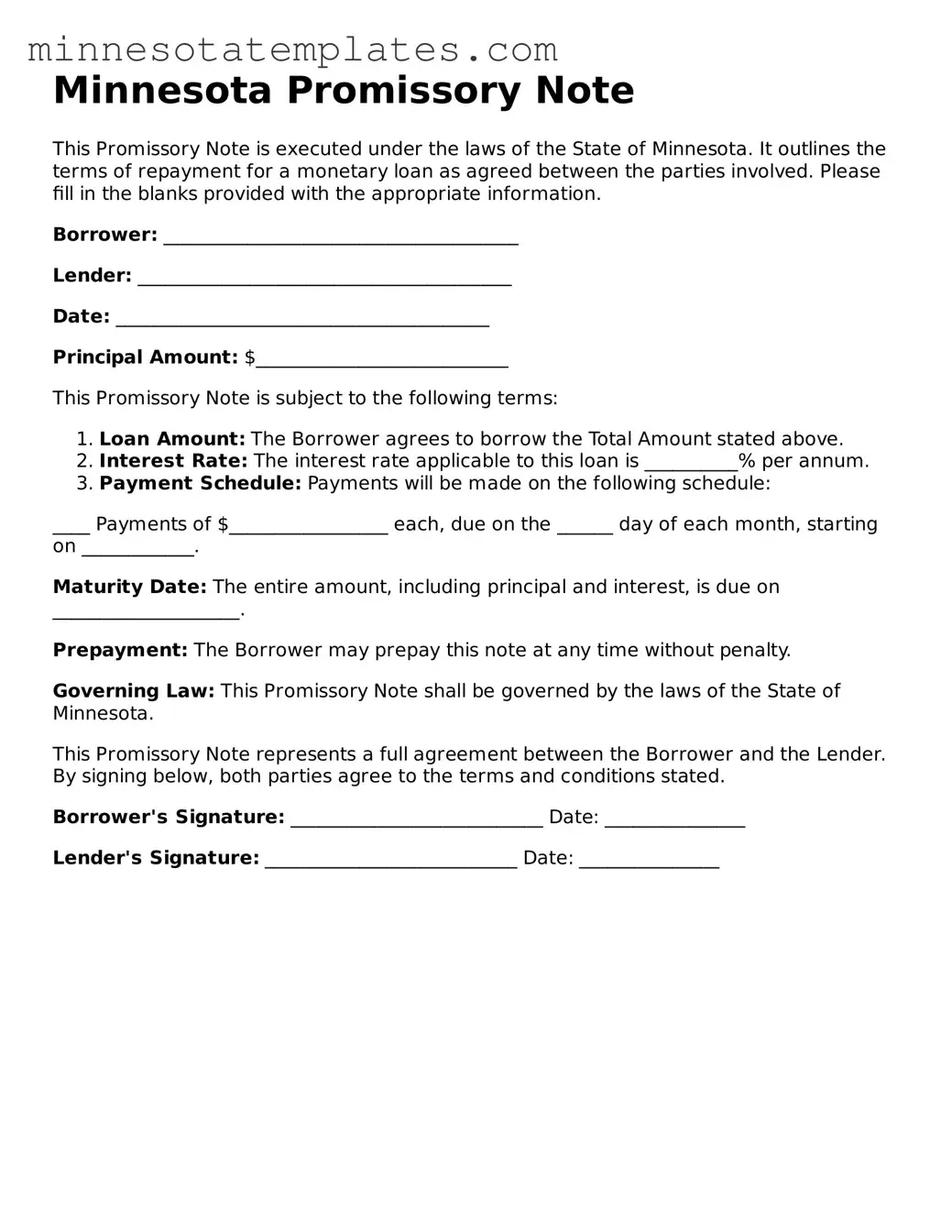The Minnesota Promissory Note form serves as a crucial instrument in the realm of personal and business finance, facilitating the borrowing and lending of money with clarity and security. This document outlines the borrower's commitment to repay a specified amount to the lender, typically including details such as the principal amount, interest rate, repayment schedule, and any applicable penalties for late payments. It also delineates the rights and responsibilities of both parties, ensuring that expectations are clear from the outset. In Minnesota, the form is designed to comply with state laws, thus providing legal enforceability and protecting the interests of both lenders and borrowers. Whether used for personal loans between friends or more formal agreements between businesses, the Minnesota Promissory Note embodies essential elements such as signatures, dates, and witness requirements, which contribute to its validity and reliability. Understanding the nuances of this form is vital for anyone engaged in lending or borrowing activities, as it lays the groundwork for a transparent financial relationship.
